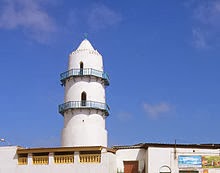Falafel or Ta’meya is one of the most
famous widely consumed inexpensive, vegan foods in Egypt. It is estimated that almost 99% of Egyptians
eat falafel every day. It is easy to make and very flavorful. Egyptians usually eat it in breakfast specially on weekends
accompanied by fava beans and Pita Bread. For this recipe you will need:
·
1 cup yellow fava beans.(You can use chickpeas if
you prefer or a mixture of both)
·
10 cloves of garlic.
·
1 big yellow onion.
·
1 cup of fresh parsley.
·
1 cup of fresh cilantro.
·
1 tsp of coriander.
·
salt to taste.
- one egg.
To make the Falafel:
1. The night before, soak the beans in a bowl overnight. Change the water once or twice if you can. Also, wash the fresh parsley and cilantro and let them dry completely.
2. Drain the beans then put it in the food processor with garlic
and onion. It will be coarse at the beginning but it will come to a smooth
texture later. Add the parsley and cilantro then pulse the whole mixture until it is very smooth.
3. Add the coriander, mix well. Add egg and salt to taste.
4. Form the mixture into small balls, about the
size of a ping pong ball. Slightly flatten, you can dip them in sesame seed. Fry in
2 inches of oil at 350 degrees until golden brown (5-7 minutes).
-The
longest river in the world, the Nile, runs through Egypt.
-Egypt is home the Great Pyramid of Giza, one
of the Seven Wonders of the Ancient World.
It was built as a burial place for King Khufu (2589-2566 B.C.) and
took more than 20 years to build. It is built from over two million blocks of
limestone, each one weighing as much as two and a half elephants. It stands
about 460 feet (149 m) high—taller than the Statue of Liberty. The base of the
Great Pyramid takes .up almost as much space as five football fields.
- The most popular sport in Egypt is soccer.
- The most popular sport in Egypt is soccer.
- Ancient Egyptian women had
more rights and privileges than most other women in the ancient world. Women could choose who they wanted to marry, get a paid job outside the
home if they wanted one. They could run a business. They could own, buy, and
sell property. They could make a will and leave their personal goods to
whomever they chose, including their daughters.
-The ancient Egyptians worshipped more than 1,000 different gods
and goddesses. The most important god of all was Ra, the sun god.
-The ancient Egyptians were the first people to have a year
consisting of 365 days divided into 12 months. They also invented clocks.
-The Egyptian polymath Imhotep (“the one who comes in peace”) is
known as the first physician, the first engineer, and the first architect.































